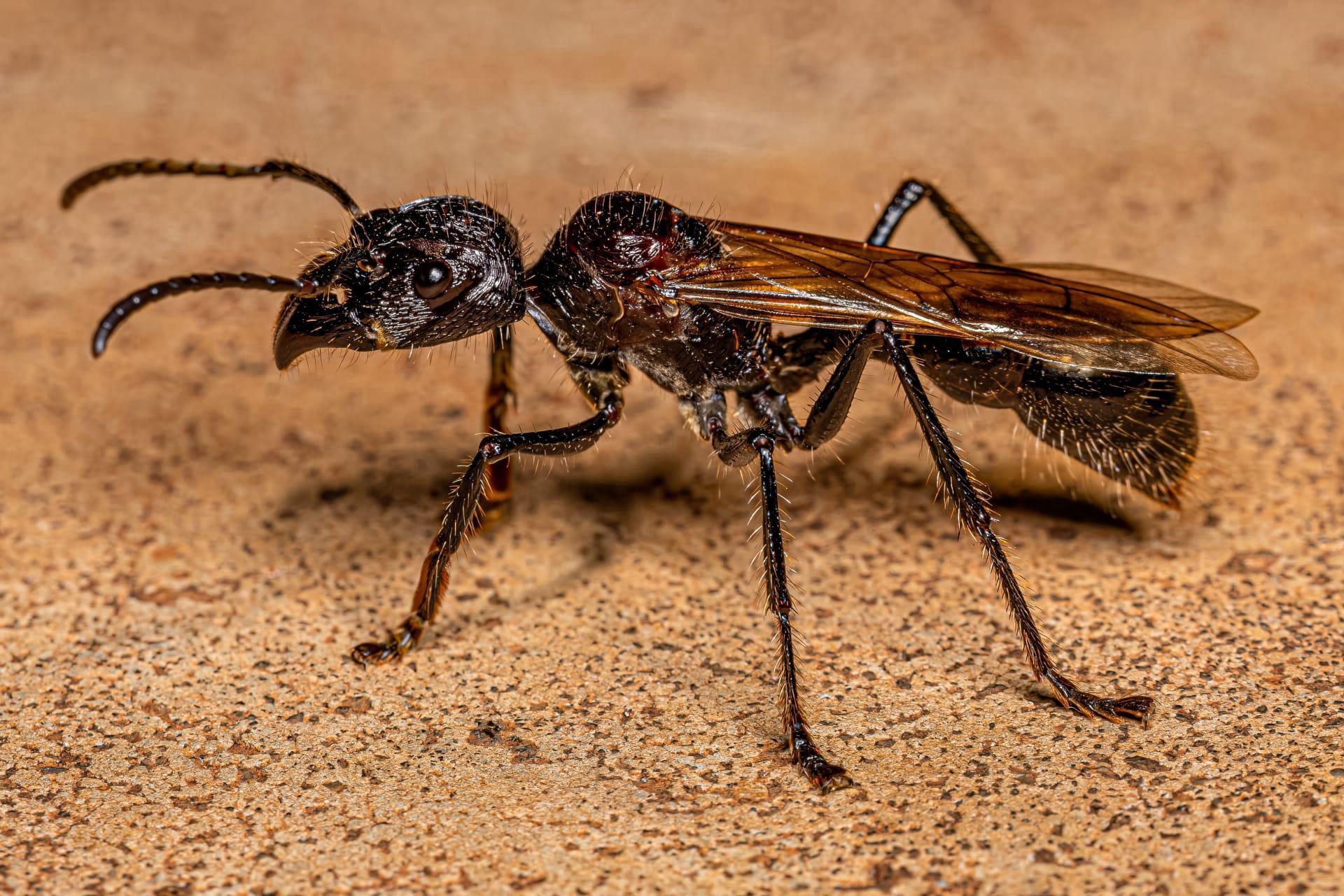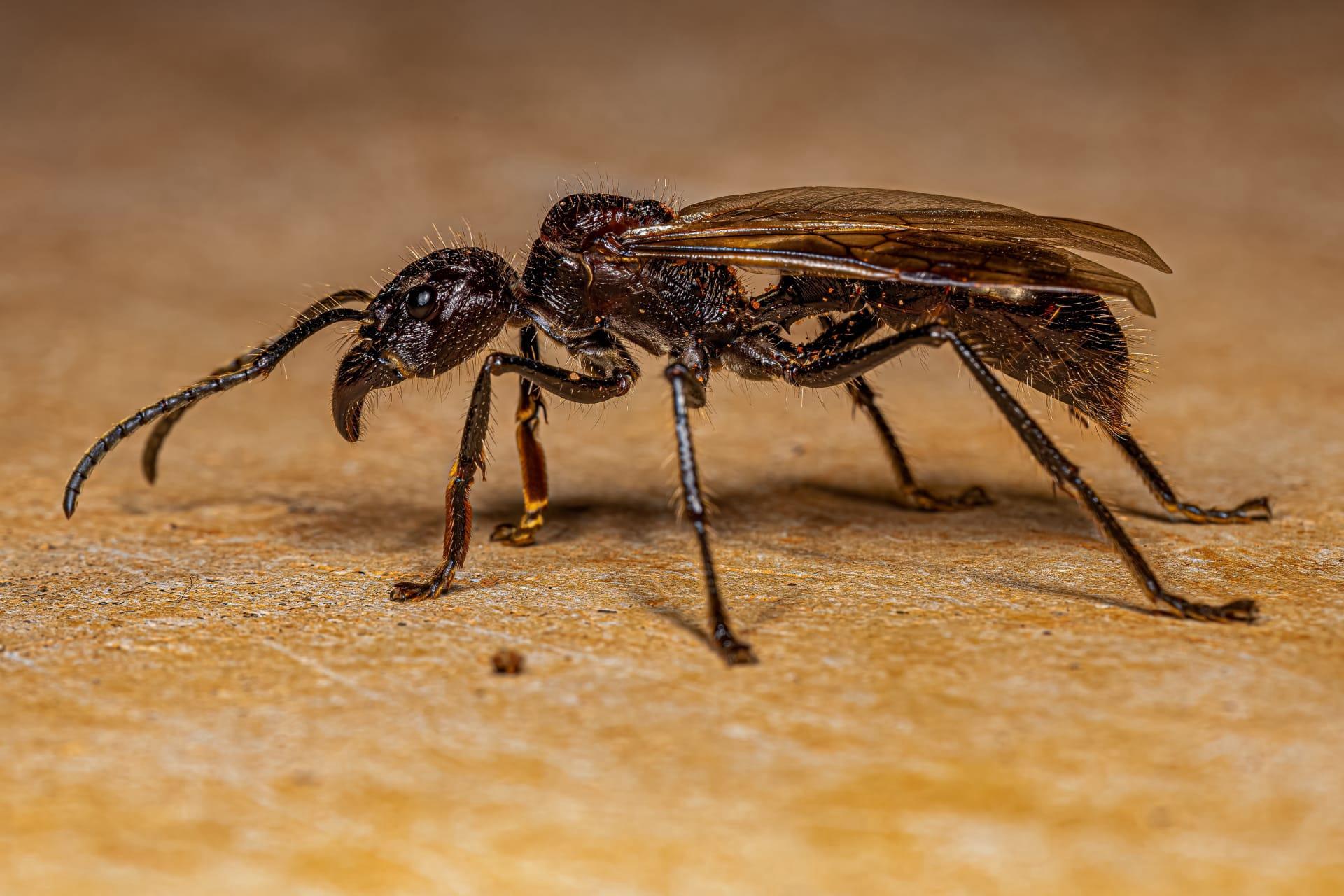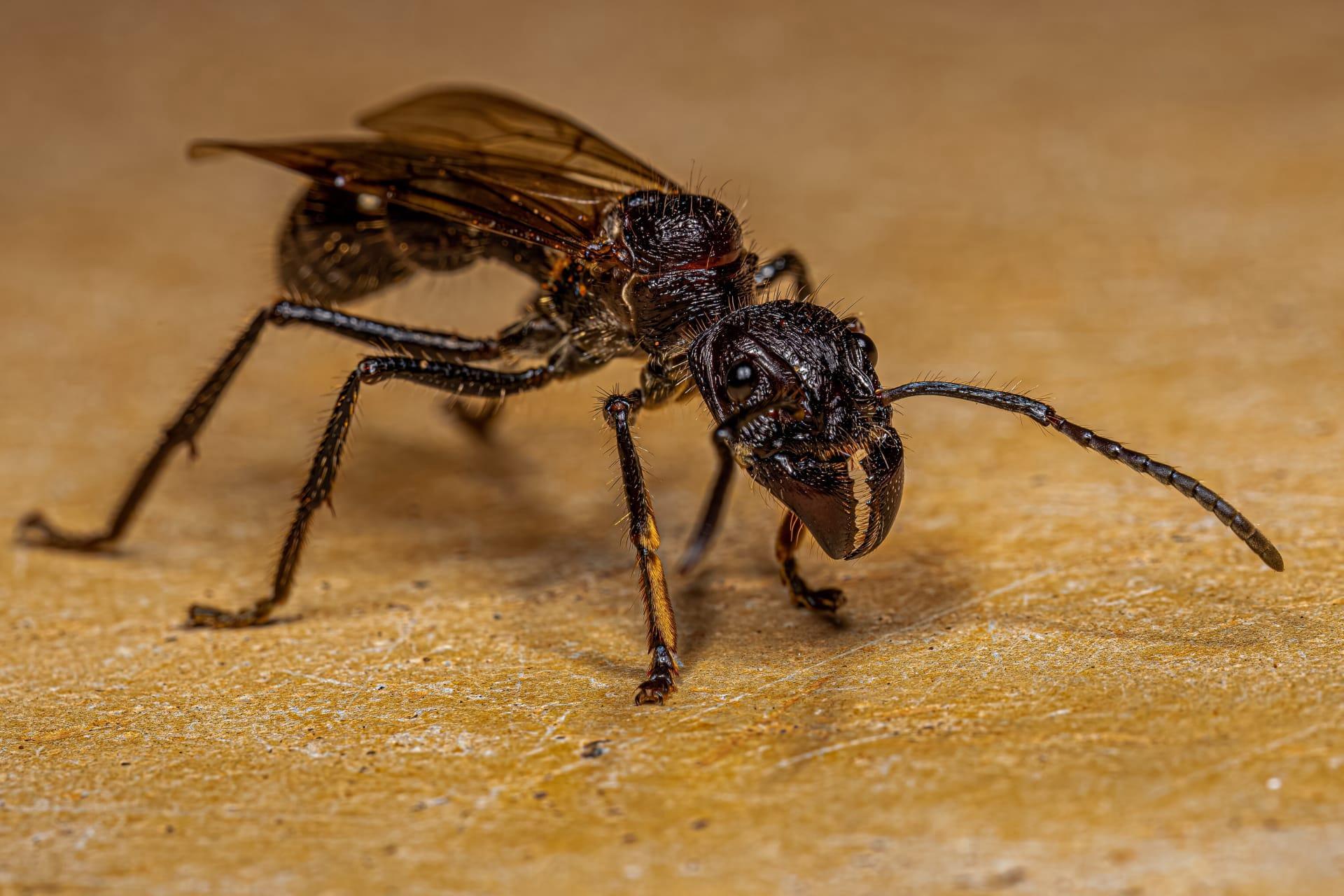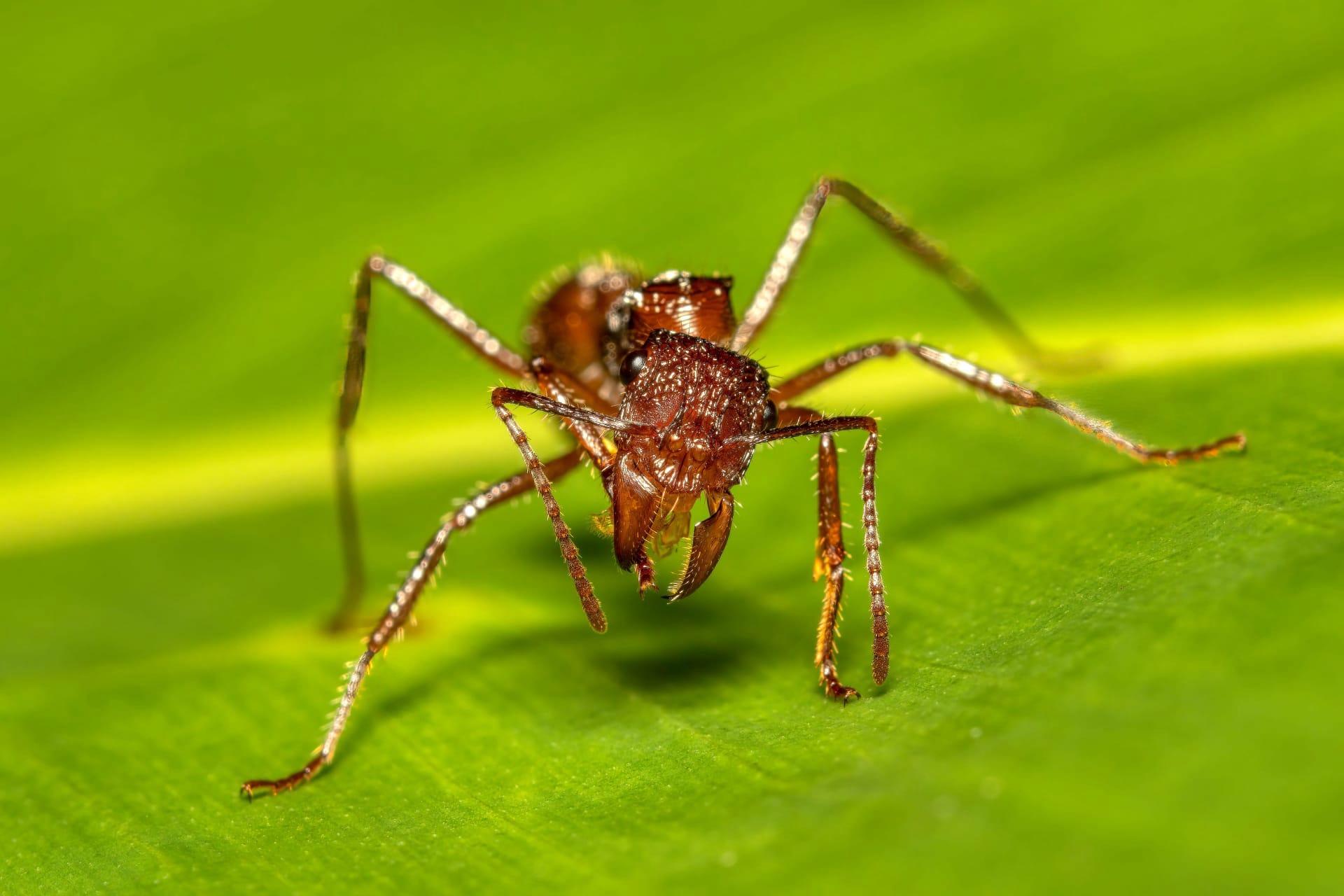Bullet Ant Trivia
- Home /
- Trivia Question /
- Animal /
- Bullet Ant Trivia
1
Question: What makes the bullet ant's sting so uniquely painful compared to other insects?
Answer: The bullet ant, Paraponera clavata, delivers a sting that's ranked as one of the most painful in the insect world. This excruciating pain is due to a potent neurotoxic peptide called poneratoxin. When injected, poneratoxin affects voltage-dependent sodium ion channels in nerve cells, disrupting normal nerve function and causing intense pain. The pain, often compared to being shot (hence the name "bullet ant"), can last for up to 24 hours. Interestingly, despite its agony, the sting leaves no significant long-term damage.
Question: How large is the bullet ant, and what does it look like?
Answer: Bullet ants are notable for their size, among the largest of all ants, measuring about 0.7 to 1.2 inches (18 to 30 millimeters) in length. They have a striking appearance with a glossy black body, long legs, and large mandibles. Their size and coloration help them blend into the rainforest floor. Additionally, they possess a pair of long, sharp mandibles and a prominent, curved stinger used for defense and hunting.

2
Question: Is it true that bullet ants are deadly to humans?
Answer: Contrary to a common misconception, bullet ant stings, while extremely painful, are not lethal to humans. There are no recorded cases of death solely due to a bullet ant sting. However, the intense pain can cause an overwhelming experience, and in rare cases, allergic reactions may pose a health risk. The primary impact of the sting is severe pain and localized swelling, but it does not lead to long-term health issues.
Question: Do bullet ants form large, aggressive colonies like some other ant species?
Answer: Bullet ants do not form exceptionally large colonies compared to some other ant species. Their colonies typically consist of a few hundred individuals, much smaller than the thousands or even millions found in some other ant colonies. They are not inherently aggressive but will defend their territory fiercely when disturbed. Their stings are primarily a defensive mechanism, not used for hunting prey.

3
Question: What role do bullet ants play in their ecosystem?
Answer: Bullet ants play a crucial role in their ecosystems as predators and scavengers. They primarily feed on nectar and small insects, which helps control the insect population. Additionally, their foraging activities contribute to seed dispersal and soil aeration, enhancing forest health. They also serve as a food source for various predators, integrating them into the food web of their rainforest habitats.
Question: How do bullet ants communicate within their colony?
Answer: Bullet ants, like many other ants, primarily use chemical signals or pheromones for communication. They lay down pheromone trails to guide others to food sources and alert colony members of potential threats. They also use tactile communication through antennation and body language. These methods enable them to efficiently coordinate colony activities, like foraging and defense.

4
Question: Are bullet ants used in any cultural or medicinal practices?
Answer: Bullet ants hold significant cultural importance among some indigenous tribes in the Amazon. Notably, the Sateré-Mawé people use bullet ants in a coming-of-age ritual. Young males must wear gloves filled with live bullet ants, experiencing multiple stings to prove their endurance and bravery. Medically, there's ongoing research into the potential use of poneratoxin, the toxin in bullet ant venom, in developing new painkillers, due to its effect on nerve cells.
Question: What is the lifespan of a bullet ant, and how do they reproduce?
Answer: Bullet ants have a relatively long lifespan for insects. Workers can live up to a year or more, while queens can live for several years. Reproduction is exclusively performed by the queen, who lays eggs that develop into workers or future queens. New queens leave the colony to mate during nuptial flights, after which they start new colonies. This reproductive process ensures the continuation and expansion of their species in the rainforest.

5
Question: Where are bullet ants predominantly found, and what is their habitat like?
Answer: Bullet ants are native to the humid lowland rainforests of Central and South America. Their habitat ranges from Nicaragua in Central America, down through the Amazon rainforest in South America. They thrive in moist, tropical environments and are often found in the canopy layer as well as on the forest floor, nesting at the base of trees or in the rotting wood.
Question: Do bullet ants have any natural predators, and how do they defend themselves?
Answer: Bullet ants face predation from various birds, reptiles, and larger arthropods. Their primary defense mechanism is their painful sting, which is a potent deterrent to most predators. Their large size and strong mandibles also provide physical defense. Their social structure, where colony members work together to defend the nest, adds an additional layer of protection against threats.